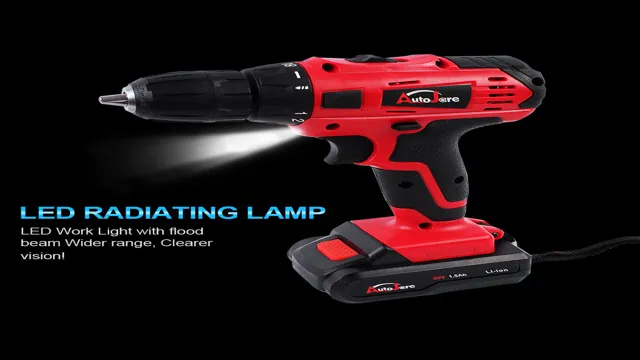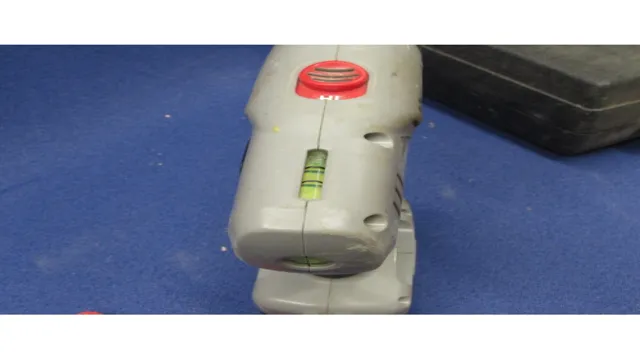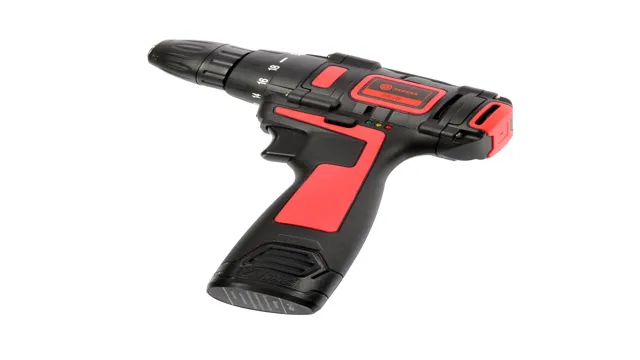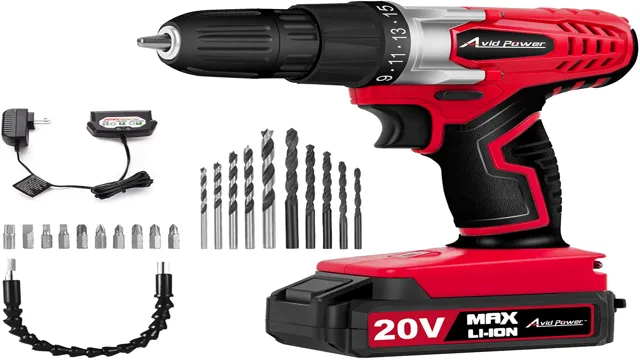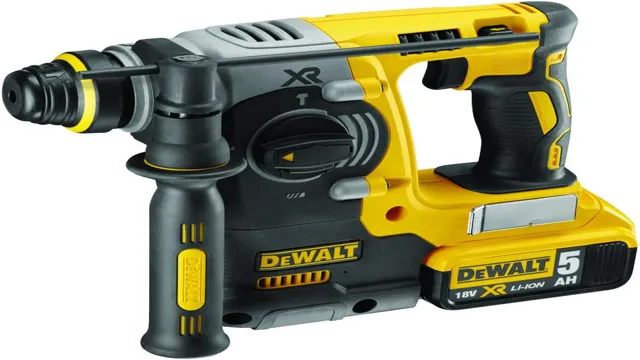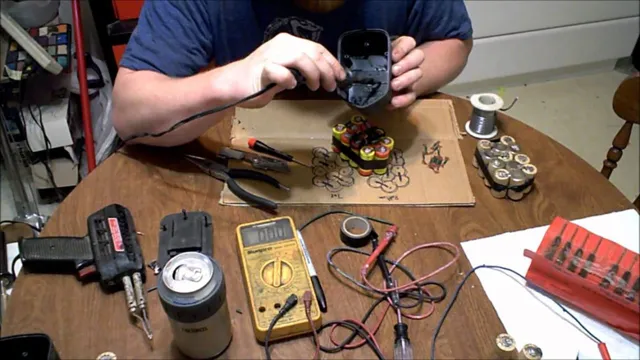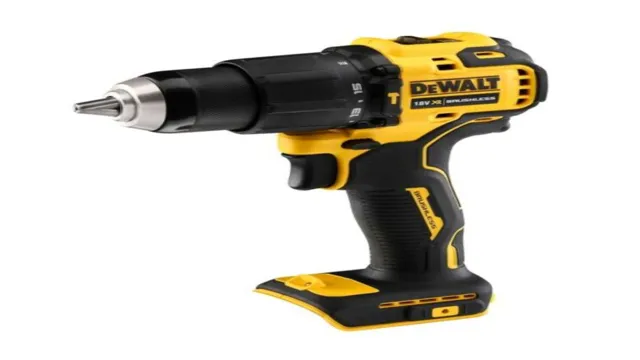Can You Drill Into Brick with a Cordless Drill? Tips and Tricks for Drilling Success!
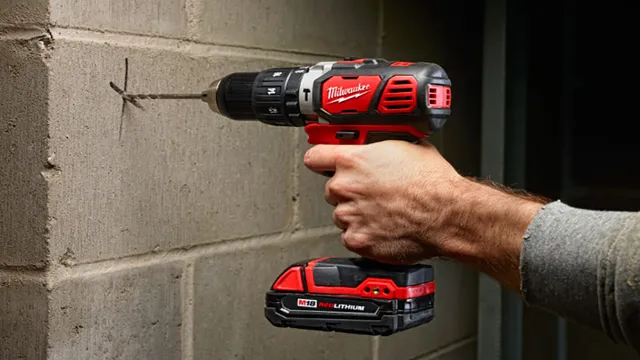
Drilling into brick may seem like a daunting task for some DIY enthusiasts. But with the right tools and knowledge, it can actually be quite an easy process. The real question is, can you drill into brick with a cordless drill? The answer is yes, you can! A cordless drill can be incredibly convenient for brick drilling projects, as it doesn’t require the use of a cord or power outlet.
However, it’s important to note that not all cordless drills are created equal, and it’s crucial to choose the right one for the job. Before you start drilling, it’s important to consider the type of brick you’re dealing with. Harder bricks will require a more powerful drill, while softer bricks may be drilled with a less powerful one.
Additionally, using the correct drill bit is essential for successful brick drilling. But what about safety? While using a cordless drill may seem like a safer option than a corded one, it’s important to wear protective gear, such as safety goggles and gloves, to avoid injury. In short, with the right tools and safety precautions in place, drilling into brick with a cordless drill is not only possible, but it can also be an easy and convenient option for DIY projects.
Understanding the Composition of Brick
If you’re wondering whether you can drill into brick with a cordless drill, the answer is yes, you can! However, it’s important to understand the composition of brick before you begin drilling, as that will affect how effective your drilling efforts will be. Brick is made of clay, shale, or other minerals that are heated at high temperatures and then cooled to form a solid material. This means that it’s quite hard and dense, which can make drilling into it a bit challenging.
But with a quality masonry drill bit and a cordless drill with enough power, you should be able to get the job done without too much trouble. Just be sure to take your time and use a slow, steady speed to prevent the drill bit from overheating and wearing out too quickly.
The Density and Hardness of Brick
Brick is an essential building material, but do you know what it’s made of? The composition of brick can vary depending on the type, but generally, it’s made of clay, shale, or a mixture of the two. The clay is mixed with water and other additives to create a moldable material that is then fired in a kiln at high temperatures. The density and hardness of the brick depend on the amount of water and additives used, as well as the firing temperature.
For example, a brick with a lower density might be more porous and less durable, while a denser brick will be more resistant to weathering and wear. Similarly, a harder brick will require more force to break or cut than a softer one, making it ideal for load-bearing walls. Understanding the composition of a brick is crucial for selecting the right type for your building project.
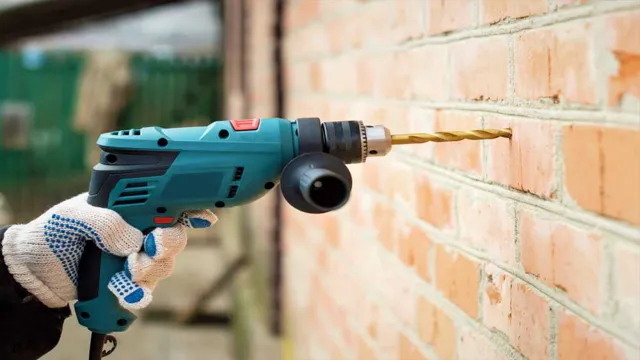
Selecting the Right Drill Bit
Yes, you can drill into brick with a cordless drill, but you will need the right drill bit. Brick is a tough material, so you cannot use any drill bit because it might break or leave a weak hole that might crumble over time. A carbide-tipped masonry drill bit is the best option for drilling into brick with a cordless drill.
These drill bits have a special coating on the tip that makes them more durable and might be more expensive than regular drill bits. However, they can drill into brick smoothly and quickly, leaving a clean hole without breaking or causing any damage. It is always crucial to choose the correct drill bit for your project to save time, effort, and ultimately achieve better results.
Masonry Drill Bits vs Regular Drill Bits
When it comes to DIY projects and home repairs, having the right drill bit can make all the difference. When faced with drilling into brick, concrete, or other masonry materials, it’s important to choose the right type of drill bit. Masonry drill bits are specifically designed to handle the tough, abrasive surfaces of masonry, while regular drill bits are better suited for drilling through wood, metal, and other softer materials.
One of the key differences between masonry drill bits and regular drill bits is the tip. Masonry bits typically have a carbide or diamond tip, which can withstand the intense pressure and heat of drilling into masonry materials. These bits also have a more aggressive flute design, which allows them to remove debris more efficiently.
In contrast, regular drill bits have a relatively smooth, rounded tip, which is better suited for cutting through softer materials without shattering or chipping. Another factor to consider is the size of the drill bit. Masonry drill bits are typically larger and thicker than regular drill bits, which allows them to handle the dense, tough materials of masonry.
They also have a specialized shank design that allows them to be used with hammer drills, which are specifically designed for drilling into masonry. In contrast, regular drill bits are typically smaller and thinner, and are designed for use with regular drill drivers. Ultimately, the choice between masonry drill bits and regular drill bits depends on the type of project you’re working on.
If you’re drilling into masonry materials, it’s always best to use a masonry drill bit, as this will ensure the best results and minimize the risk of damage or injury. However, if you’re working with wood, metal, or other softer materials, regular drill bits will usually suffice. Always be sure to select the right drill bit for the job, and take the necessary precautions to stay safe while using power tools.
Size and Shape of Drill Bit
When it comes to selecting the right drill bit, size and shape play a crucial role. The size of the drill bit depends on the diameter of the hole you need to make. If you are not sure about the size of the hole, start with a smaller drill bit and work your way up until you achieve the desired size.
You May Also Love:
As for the shape of the drill bit, it should match the type of material you are drilling through. For instance, a twist drill bit is suitable for drilling through wood, while a masonry drill bit is ideal for drilling through concrete or brick. Additionally, it is important to ensure that the drill bit you select is compatible with your drill.
Using the wrong drill bit can result in damage to both the drill bit and the tool. Therefore, taking the time to choose the appropriate drill bit will ensure that you achieve accurate and efficient results.
Using a Cordless Drill to Drill Into Brick
If you’re wondering whether you can drill into brick with a cordless drill, the answer is yes, you can. However, it’s important to use the right techniques and equipment to ensure that you can drill safely and effectively. First, make sure that you have the right drill bits for the job.
You’ll need masonry bits that are specifically designed to drill into hard materials like brick. You should also use a hammer drill function on your cordless drill to create a percussion force that helps to break up the brick as you drill. Once you’re ready to drill, start by making a small pilot hole to guide your drill bit.
Then, gradually increase the size of the hole until it’s large enough for your intended use. By using the right techniques and tools, you can successfully drill into brick with a cordless drill.
Preparation Steps
Drilling into brick with a cordless drill may seem intimidating, but with the right preparation steps, you can tackle this DIY task like a pro. First, gather all necessary tools, including safety goggles, a masonry drill bit, and a cordless drill with a charged battery. It is also recommended to mark the area you plan to drill with a pencil or masking tape and to avoid drilling near any electrical or plumbing lines.
Next, adjust the drill’s torque and speed settings to ensure optimal performance and accuracy when drilling into the tough brick material. Finally, apply steady, even pressure while drilling, periodically pulling the drill back to clear out any debris, and periodically check the depth of the hole. By following these preparation steps, you can confidently use your cordless drill to efficiently and safely drill into brick for any home improvement project.
Drilling Techniques
Drilling into brick can seem like a daunting task, but with the right tools and techniques, it can be done easily and efficiently. One such tool is the cordless drill, which provides the convenience of portability and flexibility. When drilling into brick with a cordless drill, it’s important to start with a masonry bit, which is specifically designed for the hardness of brick and other masonry materials.
It’s also important to use the hammer setting on the drill, which creates a hammering motion that helps to break through the tough surface. To avoid damaging the brick or causing excessive dust, it’s recommended to use a vacuum attachment on the drill or have someone hold a vacuum nearby to catch the debris. With these tips in mind and a steady hand, drilling into brick with a cordless drill can be a breeze.
So, grab your cordless drill and get ready to tackle your next DIY project with confidence!
Safety Precautions When Drilling Into Brick
Yes, you can drill into brick with a cordless drill, but it’s important to take certain safety precautions to avoid any mishaps. Firstly, make sure to wear proper protective gear such as safety glasses and work gloves. Secondly, use a masonry drill bit that’s specifically designed for drilling into brick.
Also, make sure that the drill bit is securely in place and tightened properly. Before drilling, try to locate any electrical wiring or plumbing that may be hidden behind the brick. If you’re unsure, use an electronic stud finder to identify the safest areas to drill.
Take your time and drill slowly, using moderate pressure to prevent the drill bit from overheating and becoming damaged. It’s important to constantly check the condition of the drill bit and replace it if it becomes dull or damaged. By following these safety precautions, you can drill into brick with your cordless drill safely and effectively.
Protective Gear
When it comes to drilling into brick, safety should always be your top priority. The dust that is generated from drilling could be harmful to your lungs, so it’s important to wear a high-quality dust mask. Additionally, protective eyewear is a must to avoid any flying debris that may occur during the drilling process.
Gloves can also be helpful not only to protect your hands but also to provide better grip on the tools you are using. If possible, it’s highly recommended to wear a long-sleeved shirt in order to prevent any skin irritation from the dust. Taking the time to properly gear up will not only protect you during the drilling process but will also give you peace of mind knowing that you are taking the necessary precautions to stay safe.
Safety Tips
When it comes to drilling into brick, it’s important to take safety precautions to avoid injury or damage to the brick. First and foremost, wear safety glasses to protect your eyes from flying debris. Additionally, wear gloves to protect your hands from sharp edges or rough surfaces.
Before beginning any drilling, make sure you know where any electrical wiring or plumbing pipes may be located behind the brick. Use a stud finder or a small nail to locate the studs in the wall to avoid accidentally drilling into them. Always use a drill bit specifically designed for masonry, as using the wrong bit can cause the drill to slip and create an unsafe situation.
Finally, use a vacuum or brush to clean any dust or debris from the hole once you’ve finished drilling. Keep these safety tips in mind when drilling into brick to ensure a safe and successful project.
Conclusion
To all those wondering whether you can drill into brick with a cordless drill, the answer is simple: Yes, you can! However, just like everything else in life, it’s all about finding the right approach. With a powerful drill and a masonry bit, you can accomplish the task with relative ease. So don’t let the challenge of brick hold you back – grab your cordless drill and start drilling away! Who needs to break bricks with their bare hands, anyway?”
FAQs
What kind of drill bit should I use for drilling into brick with a cordless drill?
It is recommended to use a masonry drill bit for drilling into brick with a cordless drill.
Can I use a regular drill bit on brick with a cordless drill?
No, it is not recommended to use a regular drill bit on brick with a cordless drill. A masonry drill bit is specifically designed for drilling into brick and other masonry materials.
Will a cordless drill have enough power to drill into brick?
It depends on the power of the cordless drill. Some cordless drills have enough power to drill into brick, while others may not. It is recommended to use a high-powered cordless drill for drilling into brick.
What should I do if the drill bit gets stuck in the brick while using a cordless drill?
If the drill bit gets stuck in the brick, try reversing the drill to remove it. If it is still stuck, carefully remove the drill bit and replace it with a new one.
Can I use a hammer drill function on my cordless drill for drilling into brick?
Yes, if your cordless drill has a hammer drill function, it can be used for drilling into brick.
What safety precautions should I take when drilling into brick with a cordless drill?
Wear eye protection and a dust mask to prevent debris from entering your eyes and lungs. Additionally, make sure to secure the brick in place before drilling to prevent it from moving around.
Can I drill into brick without making a pilot hole with a cordless drill?
It is recommended to make a pilot hole before drilling into brick, as it will make the drilling process easier and prevent the brick from cracking.

